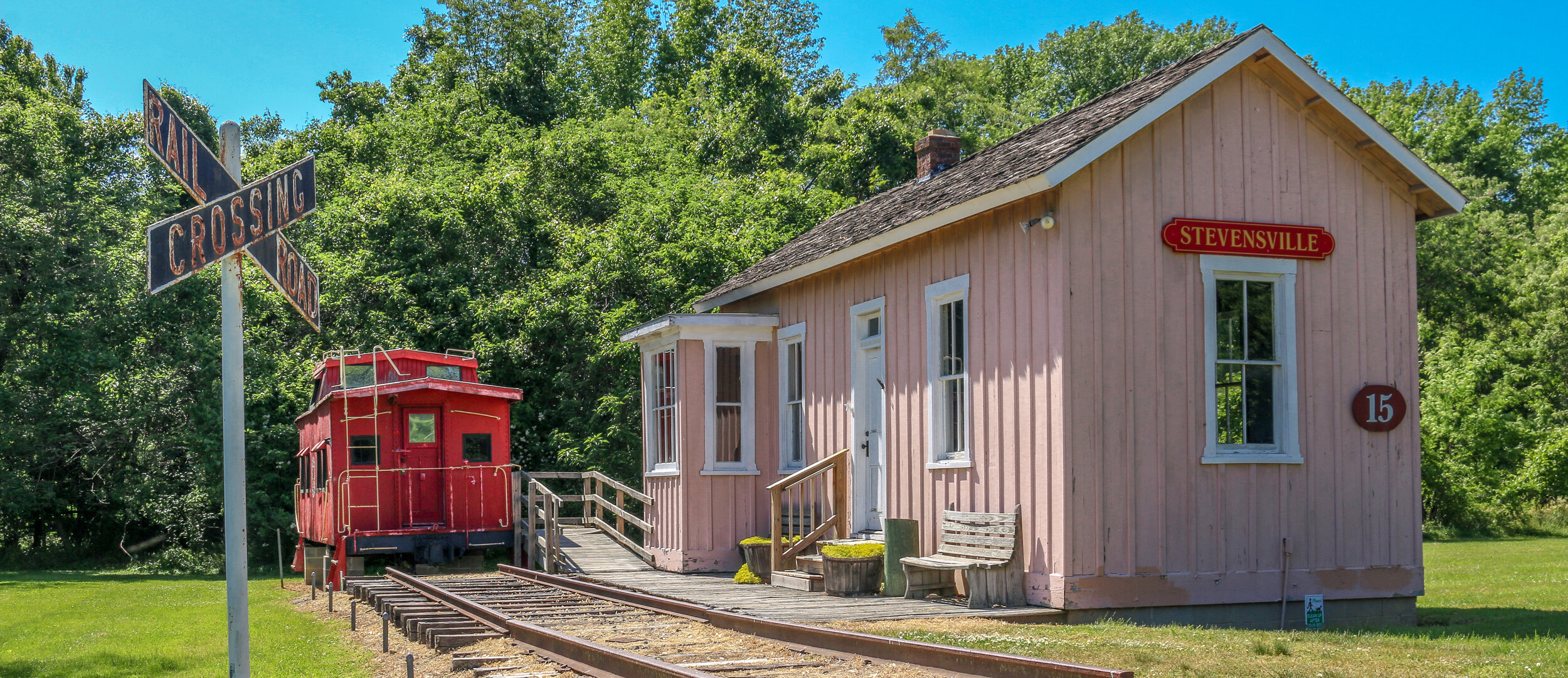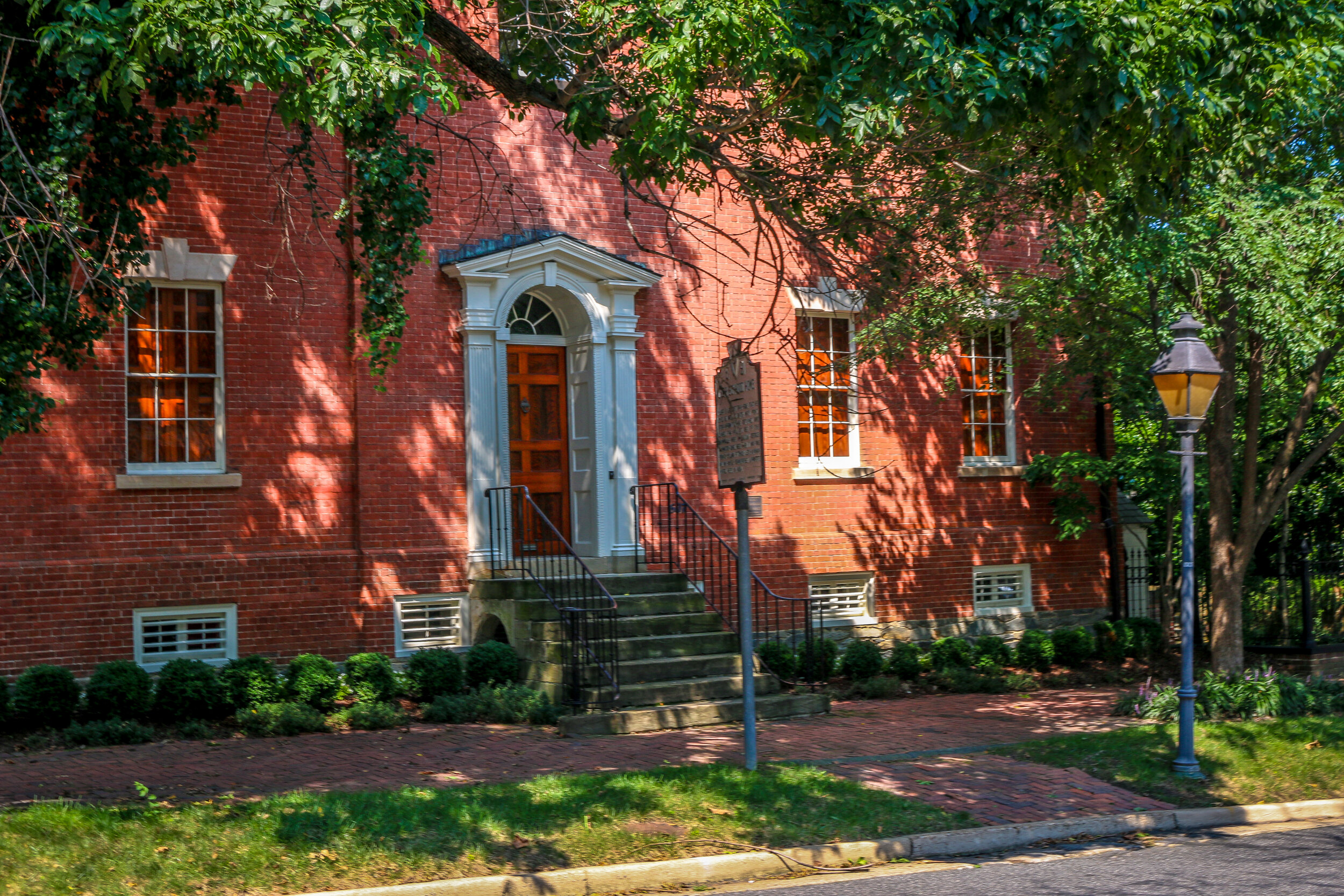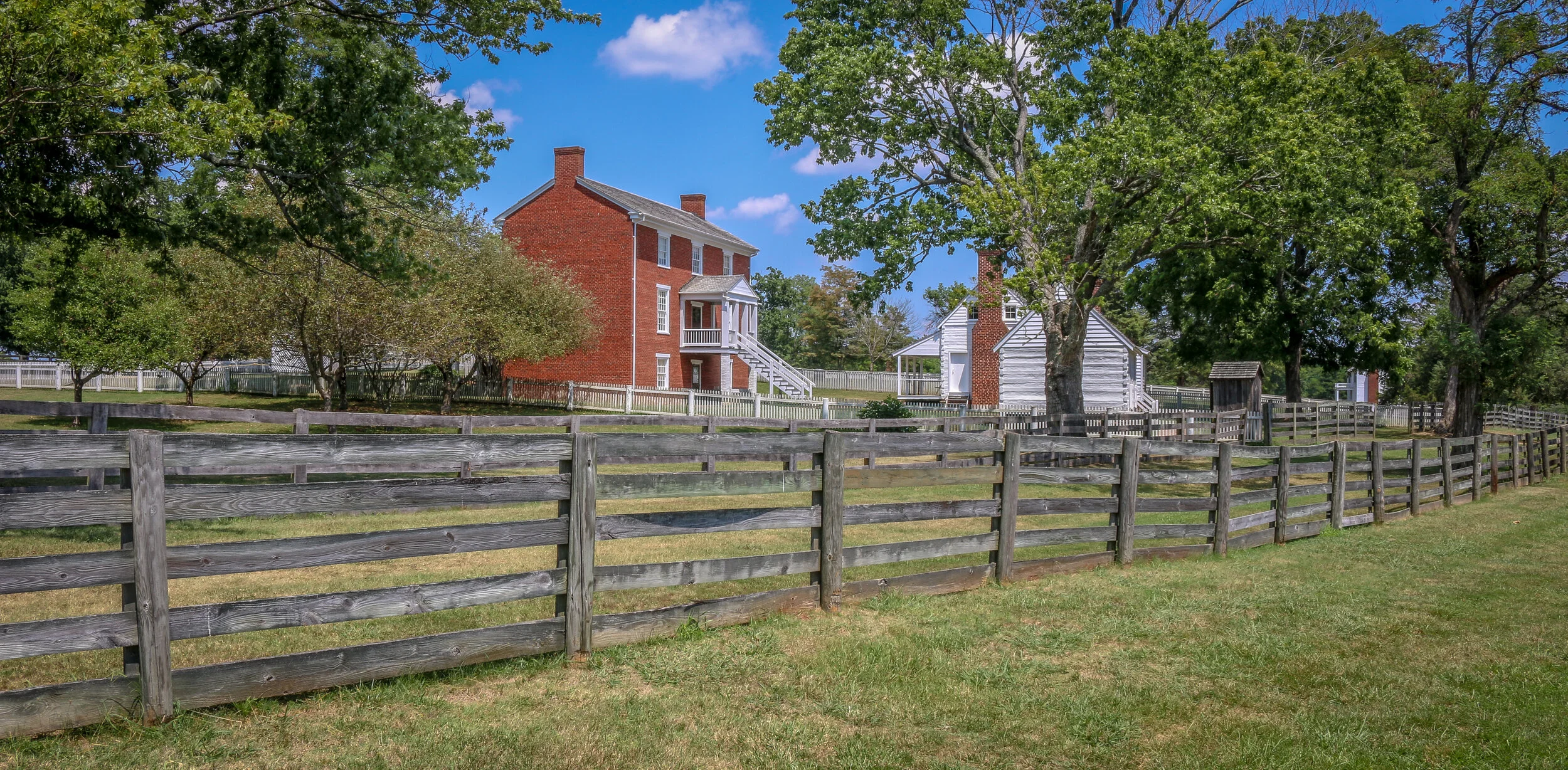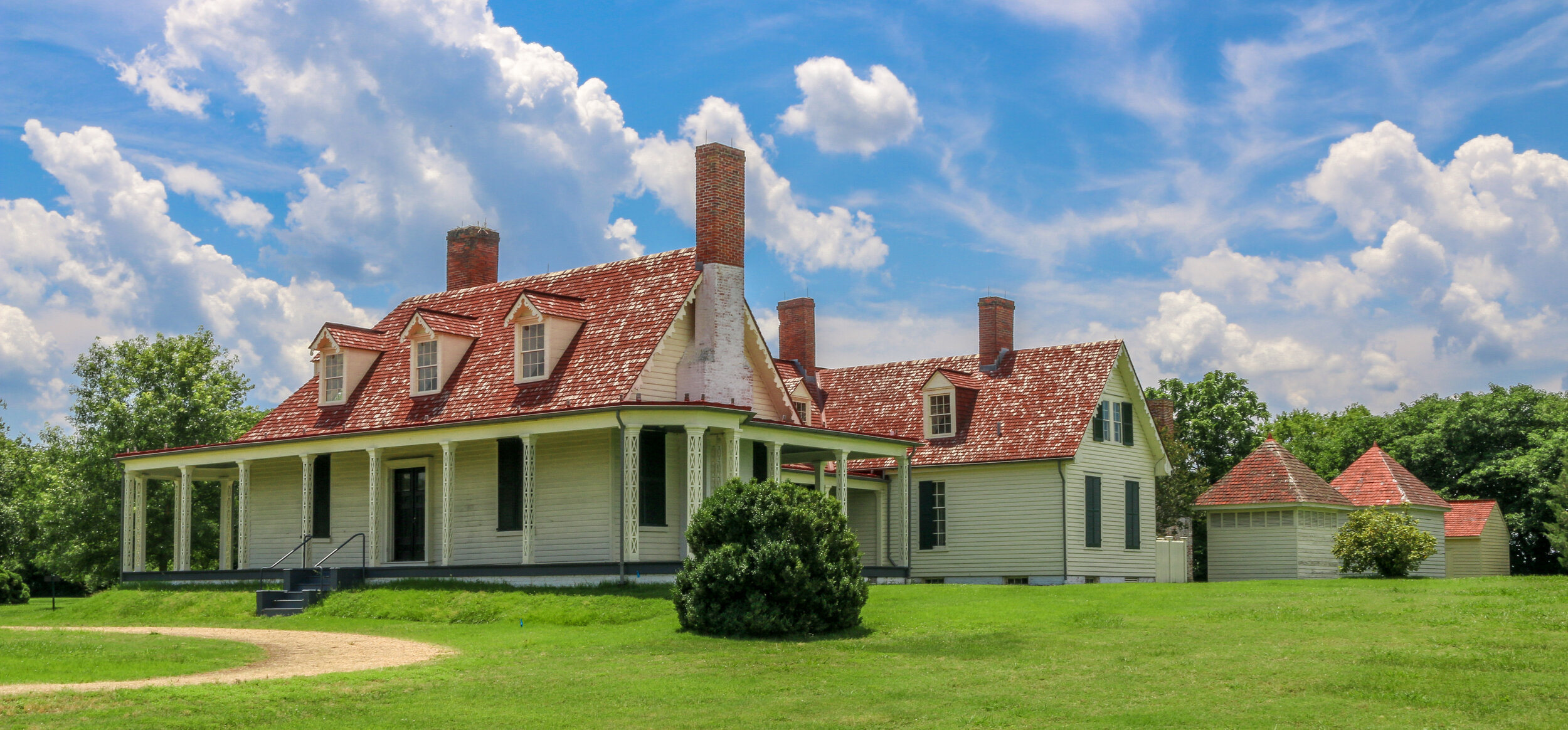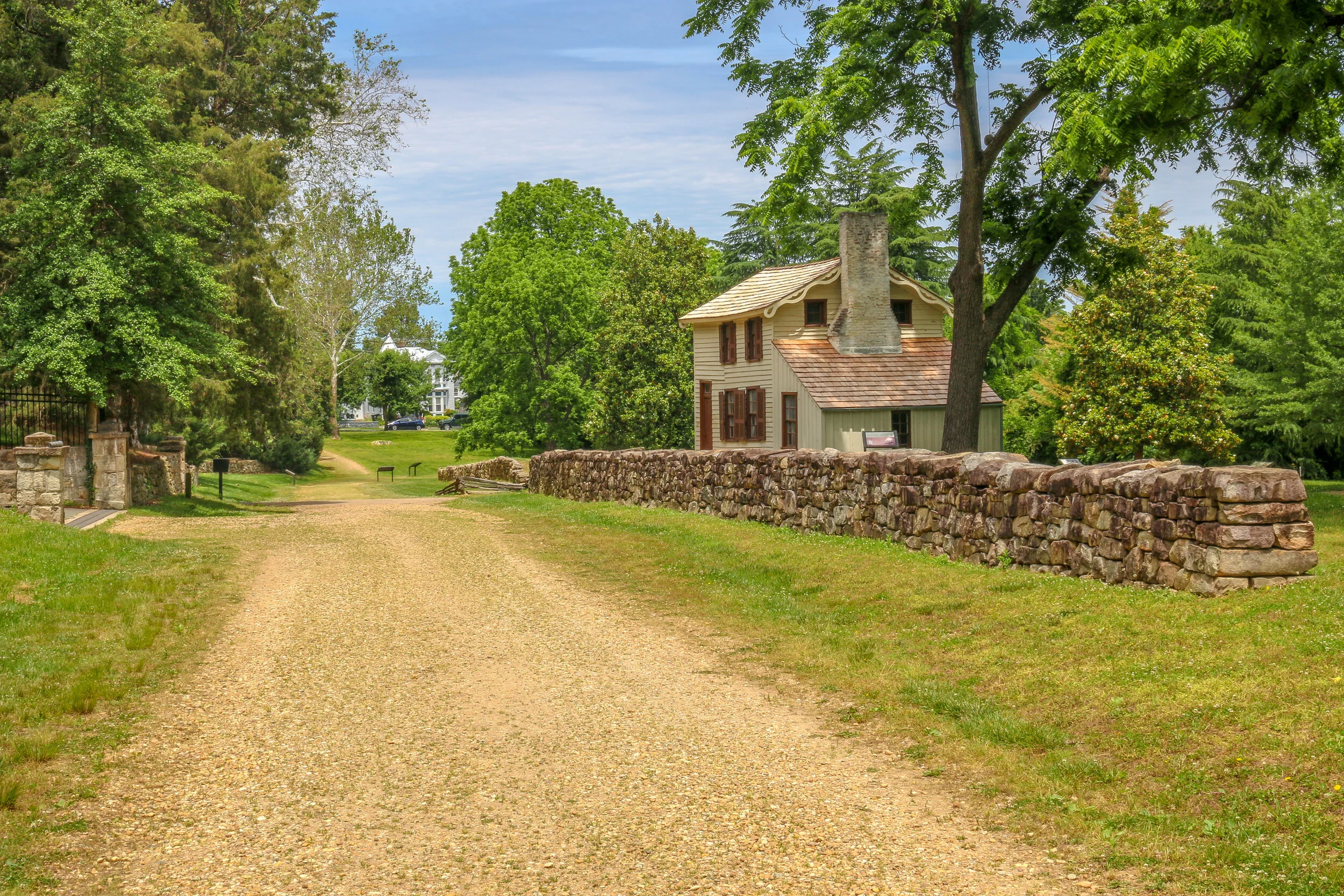Hello Everyone. Christmas week is upon us! It snuck up on me pretty quickly this year, but I’m very grateful to have been able to spend the holiday season with friends and family at home. It’s always nice to be home in Washington this time of year as I truly think it’s the best time of the year to be in our nation’s capital. I’m writing to you this week from my brother’s house here in New Hampshire where I’ve only just arrived this evening. I figured it would be good to spend a few days in New England before heading off to old England for the New Year.
It’s been a fun and festive week here and I hope you are all enjoying the season however and wherever you celebrate it. We’ve certainly been busy and I’d love to tell you what we’ve gotten into this week. Last Tuesday my folks and I took a wonderful candlelit tour of the Tudor House, one of Washington’s oldest homes, the oldest parts of which date back to the late 18th century. We drank cocoa, ate mince pies and pound cake and heard the story of the family which called Tudor House home for 6 generations. Many of the furnishings are original to the house and the whole house was decorated for Christmas which was really special. After our tour we had a great dinner at Farmers, Fishers and Bakers on the Georgetown Waterfront while watching ice skaters cruise around the rink.
Wednesday we got up early and headed up to Columbia, Maryland to check out an afternoon matinee at Toby’s Dinner Theatre. We started with a really delicious buffet brunch and then enjoyed a fabulous production of the Christmas classic It’s a Wonderful Life performed in the round. The actors were great and the adaptation was incredibly well done. This was definitely a highlight of the season and I will absolutely be returning to Toby’s in the future. After the show we took a spin around Historic Ellicott City, a town I’ve really enjoyed visiting over the last couple of years. The town was decorated for the season and it was fun to wind around the hills and rivers for an hour or so. We wound up the day with a few craft beers at the nearby Sapwood Cellars Brewery.
On Thursday I spent the day cleaning and packing and then headed over to my friend Sandy’s house for dinner. Sandy was my date to my senior prom and has become one of my very good friends over the last thirty years.
Hello Everyone! January is passing quickly here in Washington. The short, cold days have not been inspiring this week, but I’m trying to stay positive and productive. I’m still keeping a close watch on case and hospitalization numbers across the south and when they start to go down, I’m going to be ready to hit the road. I’m definitely thinking the beginning of February. I do feel like I’ve been dodging and weaving as more of my friends come down with Covid, but I’m still managing to avoid it. Between my diabetes and the age of my folks, I definitely am not in the “just get it over with” camp. I feel like if I can head south and into warmer temperatures, I can spend most of my time outside like I did this summer and I still think my risks are acceptable if I’m outside. I have been hitting the gym every day and punching away at some of my projects this week, but I’ve mostly been hanging out at home and trying to stay warm. I did finally finish (for now) my gallery pages from this summer and fall’s trip to Michigan, Wisconsin and Minnesota. It was fun to look back at these photos and the memories of the last six months as I got these together. I hope you get the chance to check them out – you can find them at these links:
Last Wednesday after I finished this post, I went back to music night with the boys. It was apparently British Invasion Night and the Beatles were heavily featured. It was nice to be there and I just wish I was good enough at playing an instrument to join in. I should have spent more time this summer and fall practicing, but I have a feeling in the months to come I may have plenty of time on my hands for just that. It’s unlikely that I’ll ever play a concert or a gig, but I would like to be good enough to join a jam session and just make some nice music.
On Thursday I went downtown to have lunch with my friends Estilla and Joby. Unfortunately the place they wanted to go was closed so we ended up wandering into Chinatown for some sushi. It wasn’t the best sushi I’ve ever had, but the company was good and we had a fun time. I hope to catch up with them in a couple of weeks in New Orleans, but we’ll see how it all goes.
Friday night we had our neighbors over for a few beers. They both like beer, so I had brought a 12-pack of New Glarus back from Wisconsin to share with them, but we just haven’t had the time to sit down and enjoy them. It’s always nice to chat with them as they are interesting people and bring shared values but a different perspective to the table. We chatted for a few hours talking about the pandemic, politics, travel, baseball, family and probably several other topics I’m forgetting. It was an enjoyable evening…
Hello Everyone. It’s wonderful to be writing to you all today. The weather is warming up here in Washington, and I’m getting everything ready for my departure which is rapidly approaching and now just under two weeks away. This will be the last of my updates from home as by next week I hope to be writing about the journey ahead, for which I am very excited. I’ve talked to some of my Michigan friends and gotten some great recommendations (and some from you guys as well), and can’t wait for a summer full of hiking, photography, small towns, state parks and the beautiful lighthouses that run up and down the coasts of the Great Lakes. It sounds divine right about now and as temperatures creep up to 90 here in DC, it’s about time for me to head for a cooler climate anyway. It’s certainly been a busy few weeks here at home, but a good couple of weeks as well.
We celebrated Eastern Orthodox Easter on May 2nd according to the old calendar. We had a wonderful surprise with a last-minute visit from my brother who took the train down from New Hampshire to be with us. We watched the midnight church service online as we did last year and had a wonderful meal together as well. Although we missed having my niece and nephew here, it was nice to have my brother join us.
That weekend we also went to Revolutionary War Days at Mount Vernon in Virginia. It was a very busy, but also very well done Revolutionary War reenactment on the fields near George Washington’s home. In addition to all the marching and shooting, there was food and music and stunning views out over the Potomac River and we had a really good time.
Later that week, my folks celebrated their 25th wedding anniversary. I cooked them up a nice meal featuring fresh trout and scallops and my stepfather got a delicious cake from a bakery down in Virginia and we had champagne and a nice evening. The next day we celebrated Cinco de Mayo with Mexican food, music and a fun game of Mexican Train (dominoes). The following Sunday was Mother’s Day and I cooked us up a delightful Sunday brunch for the occasion. It was definitely a week full of cooking for me, but I really enjoyed it and we had some delicious meals for sure.
For Mother’s Day I got my mom a night out of the city which we all enjoyed last week. We packed up the car and headed out to Lost River State Park in West Virginia where I got us a really nice old log cabin for the night. On the way there we stopped at the Hunter’s Head Tavern out in Upperville, Virginia, a delightful farm-to-table English-style country pub. When we got to the park we checked out Lighthorse Harry Lee’s old cabin near the old spring, and then settled in for a few beers around an afternoon campfire
The Potts-Fitzhugh house at 601-607 Oronoco Street in Alexandria is one of the most interesting houses still standing in the area. Known most famously as the Boyhood Home of Robert E. Lee, the house’s history goes much deeper. The house was built in 1795 in what was then the Alexandria section of Washington D.C. for John Potts. Potts was the secretary of the Potomac Canal Company, which was attempting to link the Potomac and Ohio Rivers with a canal around Great Falls. Potts was an old friend of George Washington who visited the house often and sometimes even spent the night during the year Potts resided in the house.
Potts lived in the Oronoco Street house for only about a year, and then sold it to William Fitzhugh, a wealthy Virginia tobacco planter and racehorse breeder who was looking for a city home. Fitshugh owned beautiful Chatham Manor in Fredericksburg which was right down the road from Ferry Farm, the boyhood home of George Washington. The two had served together in the Virginia House of Burgesses before the Revolution, and remained friends. In fact, Washington dined with Fitzhugh at this house on Oronoco Street just one month before he died, on his last visit to Alexandria. Fitzhugh was married to Ann Randolph and the couple had three children. One of their children, Mary Lee Fitzhugh, would grow up to marry George Washington Parke Custis, a grandchild of Martha Washington from her first marriage. The wedding took place in the parlor on Oronoco Street. George and Mary Lee had one daughter, Mary Anne Randolph Custis, who would grow up to marry Robert E. Lee in 1831, two years after he graduated from West Point. During the Civil War, the Lees would take refuge on the Fitzhughs’ country estate, Ravensworth, which they built after selling Chatham. When William Fitzhugh died in 1809, his city home on Oronoco Street passed to his son, also named William, who would rent it to the house’s most famous occupants: Henry “Light Horse Harry” Lee and his family which included then five-year-old Robert E. Lee.
Robert E. Lee was born in Stratford, Virginia in 1807, but he moved with his family to Washington D.C. in 1810, when he was just 3 years old, and lived at 611 Cameron Street in the Alexandria section. In 1812, they moved to this house on Oronoco Street where they lived for the next four years. The Lees would move to 407 N. Washington St. in 1816 but returned to the house on Oronoco Street in 1820. On October 14th, 1824, the Marquis de Lafayette was in Washington and wanted to visit his old Revolutionary War friend “Light Horse Harry” Lee’s widow and children,so he stopped by their home on Oronoco Street. Lafayette met 17 year-old Robert and no doubt told him of his father’s heroism in the Revolution. Robert lived on Oronoco St. until he departed for West Point in 1825 on the recommendation of William Fitzhugh the younger. When Robert left, his mother and two sisters moved across the river to Georgetown, but the house on Oronoco Street would be inhabited by other members of the Lee family for the next 62 years until it was sold to the Burson family in 1887. During the Lee family’s tenure there, Alexandria was retroceded to Virginia. One can only speculate on the fate of Robert E. Lee and the nation had his boyhood home remained a part of Washington D.C…
Hello Everyone, it’s hard for me to even fathom that this is week 20 of this post series. I was hoping when I arrived home in the beginning of April that I would only be here for a few weeks and then I would be back out on the road, but here I am 20 weeks later. I’m still enormously grateful to have a place to weather this storm, especially knowing that things could be much worse if I didn’t. I just wish I knew what the end date to all of this was so I could make some plans. It’s been a quietly busy week here in Washington and I’ve actually done quite a bit which has been really nice. I’ve also had some good news in my feed this week which also helps. One of my best friends welcomed a new baby boy to the world this week in New Orleans, so welcome Theodore. Another friend of mine from grade school has announced his wife’s pregnancy this week as well. These are both reminders to me that the world has continued to turn even if my wheels have stopped doing so.
Last Thursday I began a new role which I’ve really enjoyed, even though I’ve only done it a couple of times. My friend James was called back to work after a few months of furlough, but his two year old son’s daycare is still closed. So I’m going to be spending some time with young Mason over the next few weeks or months so they can work and we can play. Mason is a sweet kid, and it’s been a real treat to watch him. His smiles and laughter are such a counterbalance to the challenges we are facing in this country and in the world, and it’s a welcome change. I’ve always loved working with kids, and it’s a wonderful opportunity to spend some time watching him grow up. It’s been great to experience the world through his eyes and I’ll be gladly helping out with this for a while until things change. That could happen tomorrow or a year from now, we’ll just have to wait and see.
Last weekend was also a lot of fun here. After celebrating the “holidays” the last few weeks, we settled in on Friday for a quiet “pub night” of wings, nachos and beers. It was nice to have a relaxing night, listen to some good music and enjoy our time together. Saturday my mom and I headed out to check out some of Washington D.C.’s oldest firehouses for an upcoming photo essay I’m putting together
The photos below come from a recent visit to Appomattox Court House National Historical Park near the town of Lynchburg, Virginia. It was the site of the surrender of the Army of Northern Virginia which effectively ended the American Civil War.
After the siege of Petersburg and the fall of the Confederate Capital at Richmond, General Robert E. Lee led his Army of Northern Virginia west with the hopes of turning south to North Carolina and joining with General Joseph Johnson’s army there. They moved towards the train depot at Appomattox Station hoping to find much needed supplies waiting for them there. Union General Phillip Sheridan and his cavalry arrived first, capturing the supply trains and forcing Lee to turn his thoughts towards Lynchburg instead. Surrounded by Union troops, they made one final push at dawn on April 9th, 1865. It didn’t take long to realize that they were surrounded and Lee called for a meeting with Ulysses S. Grant to discuss the terms of surrender.
The site chosen for this conversation was the home of Wilmer McLean in the tiny village of Appomattox Court House. The generals met in the parlor, recreated above, to hammer out the details. The terms offered were very generous as the Confederate soldiers were to be immediately paroled and even allowed to keep their horses and sidearms. Their parole papers were printed in the nearby Clover Hill Tavern. The Southerners marched into town, stacked their rifles, turned over their cannons and marched out. While the surrender of Lee’s Army of Northern Virginia was not the end of the Civil War, there was little chance or hope for the Southern cause in its aftermath. The war would technically drag on until early summer, with skirmishes across the south, but the surrender at Appomattox Courthouse was the beginning of the end. Four long years of fighting which cost over 600,000 lives was finally nearing its conclusion…
Hollywood Cemetery is a beautiful, sprawling old cemetery overlooking the James River just west of downtown Richmond. Established in 1849, Hollywood Cemetery is the final resting place of two U.S. Presidents, James Monroe and John Tyler, and Jefferson Davis, the only President of the Confederacy. Also buried at Hollywood are 28 Confederate Generals including JEB Stuart and George Pickett as well as a considerable number of Confederate soldiers, both known and unknown. The Monument of Confederate War Dead is found there as well in the form of a 90 foot pyramid dedicated in 1869.
We enjoyed our visit to Hollywood Cemetery and spent several hours there. It has quite a history and some beautiful examples of funerary art. The President’s Circle includes the two presidents mentioned above and local celebrity burials as well. The south side of the cemetery offers beautiful views of the James River and Downtown Richmond. We used the Girl Scout Self-Guided Tour Pamphlet (found HERE) to help us find our way around. It can be tricky, but it’s not big enough to get really lost. I hope you enjoy these photos from Hollywood Cemetery.
I took these photos last week in the midst of the Confederate statue removal process in the old Confederate Capital of Richmond. It was a unique time to visit because some of the statues had already been removed, one of JEB Stuart was in the process of being removed and the two central ones to Robert E. Lee and Jefferson Davis still stood, although both have been slated for removal.
In taking these photos I wanted to capture the spirit of the protests which ultimately have led to the conversation over the removal of these statues, so I have included some close-up shots of the graffiti. Some of the graffiti is targeted towards police brutality while some supports the Black Lives Matter movement.
I am of the opinion that these statues cannot continue to stand in these central places in our nation’s cities. While there are aspects of all of these men which I admire and respect, the cause for which they fought was ultimately the continuation of slavery in perpetuity. There are places for these statues as I believe all art tells a story, but the story currently being told isn’t a complete one and needs to be adjusted with our current understanding of history. These statues coming down isn’t erasing history, it is history.
The photos below come from a recent visit to the battlefields of the greater Richmond/Petersburg Area. With the exception of the first few from Gaines Mill which was important to the Peninsula Campaign of 1862, most of these battles were part of the 1864 Overland Campaign. This long, brutal and bloody series of battles would eventually lead to the capture of Petersburg and the fall of Richmond which set the stage for the surrender of the Army of the Potomac at Appomattox. Civil War Chronicles will trace the major battles of the Eastern Theater of the war through photos and brief histories
Richmond was not the original capital of the Confederacy, but became the capital after Virginia seceded from the Union in April of 1861. Richmond and neighboring Petersburg were major industrial hubs with rail lines connecting to points near and far and the James River to further move supplies in and out of the area. The rivers surrounding the city made defending it somewhat easier as well. Because of the strategic importance of Richmond, it would be the focus of several major campaigns during the war.
Our visit started at Gaines Mill Farm which saw some of the worst fighting of the Seven Days Battle during the Peninsula Campaign of 1862. This battle was the first in which Robert E. Lee had command of the Army of Northern Virginia following the wounding of Joseph Johnston. Lee’s ability to hold off George McClellan and his Union forces would direct the war away from Richmond and back to Northern Virginia to Fredericksburg and Chancellorsville which we visited several weeks ago…
The photos below come from a recent visit to Fredericksburg and Spotsylvania National Battlefield Park, which also includes the Battles of Chancelorsville and The Wilderness. Civil War Chronicles will trace the major battles of the Eastern Theater through photos and brief histories.
It had been almost a year since the horrific battle of Gettysburg, and in the interim President Lincoln had turned command of the Union Army over to General Ulysses S. Grant. Grant would lay out a plan to attack the confederacy on many fronts including Sherman’s march towards Atlanta and an attack on Mobile, and Grant himself would ride with General George Meade’s Army of the Potomac. Their goal was to bring the war back to Virginia and keep the pressure on General Lee and his Army of Northern Virginia. This Overland Campaign would be a war of attrition and would bring the war to new levels of horror but ultimately lead to Lee’s surrender at Appomattox.
On May 4th, 1864 the Army of the Potomac crossed the Rapidan River and engaged Lee’s army in an area called The Wilderness. Apparently the area today bears little resemblance to what it did at the time when new growth underbrush made movement difficult, artillery less effective and confusion the norm. Fierce fighting took place on the scattered farms in the area which allowed for some open space in which to maneuver, but most of the battle took place in the dense forest. On May 6th, the Union Army had taken the upper hand and Lee’s men were in grave danger of being overrun on the widow Tapp’s farm. In a scene from the movies, Longstreet’s reinforcements arrived at just the right moment and Lee was prepared to lead them into battle himself, but the Confederates wouldn’t allow it and moved him quickly to the rear. After two days of heavy fighting neither side had gained a decisive victory. Unlike his predecessors, Grant didn’t pull back but rather pushed forward, ordering a night march towards the town of Spotsylvania Court House. His plan was to get between Lee and the Confederate Capital at Richmond. Sensing this move, Lee ordered his men to move that night as well.
After being turned back south after the Battle of Antietam, Confederate General Robert E. Lee marched his army back to Virginia. Union General George McClellan was replaced by General Ambrose Burnside to command the Army of the Potomac, and President Lincoln urged Burnside to pursue the Army of Northern Virginia deep into the state and attack the Confederate Capital at Richmond. The major obstacle lying in their way was the Rappahannock River.
Burnside arrived at Stafford Heights overlooking the river and the small town of Fredericksburg in mid-November, 1862. He had sent orders to have pontoons at the ready to provide a means of bringing his army rapidly across the river. Tragically for Burnside and his men, the pontoons didn’t arrive for several weeks. Instead of crossing the river in boats or rafts, he chose to wait for the pontoons. By the time they got there, Confederate troops had dug in on the high ground south of the city called Marye’s Heights and behind a stone wall along a sunken road to the front of this position.
Union engineers worked through the night of December 10th to assemble the pontoon bridge, but their progress was slowed by Mississippi sharpshooters in town. A small group of Union soldiers crossed the river in boats and fought a battle to secure the streets of the town. They finally secured the town in late afternoon on the 11th, but it was winter and the daylight soon gave out. The bridge would be completed and most of the army would cross it on December 12th.
On July 21st, 1861 the first major battle of the American Civil War took place near the town of Manassas, Virginia and just west of a meandering creek called Bull Run. The battle was supposed to be a quick and decisive one, and many congressmen and socialites rode out from Washington with picnic baskets to watch it unfold. 10 hours after the battle began, 900 young men lay dead on the battlefield and the bloodiest war in American history began in earnest. This first Battle of Bull Run at Manassas was also where General Thomas J. Jackson earned his nickname as General Barnard Bee commented to his men “There stands Jackson like a stone wall! Rally behind the Virginians”. By the end of the day, the Southerners had sent the Federals running back to Washington and won a major victory for the Confederacy.
Just over a year later, the two armies clashed once again near this critical rail junction just 25 miles from Washington D.C. For three days in August, the Battle of Second Bull Run at Manassas raged violently across the landscape. When the smoke cleared, 3,300 soldiers lay dead and the South once again claimed victory. General Robert E. Lee, now in charge of the South’s Army of the Potomac, knew that their breadbasket in Northern Virginia was running low, so he pushed the war across the Potomac River and into the North for the first time. The tides would turn at the battle of Antietam at Sharpsburg, Maryland. To learn about this next chapter in the war, check back for my next installment of the Civil War Chronicles, coming soon.
The photos below come from a cloudy visit to the Manassas National Battlefield, the site of two important battles from the American Civil War. Civil War




